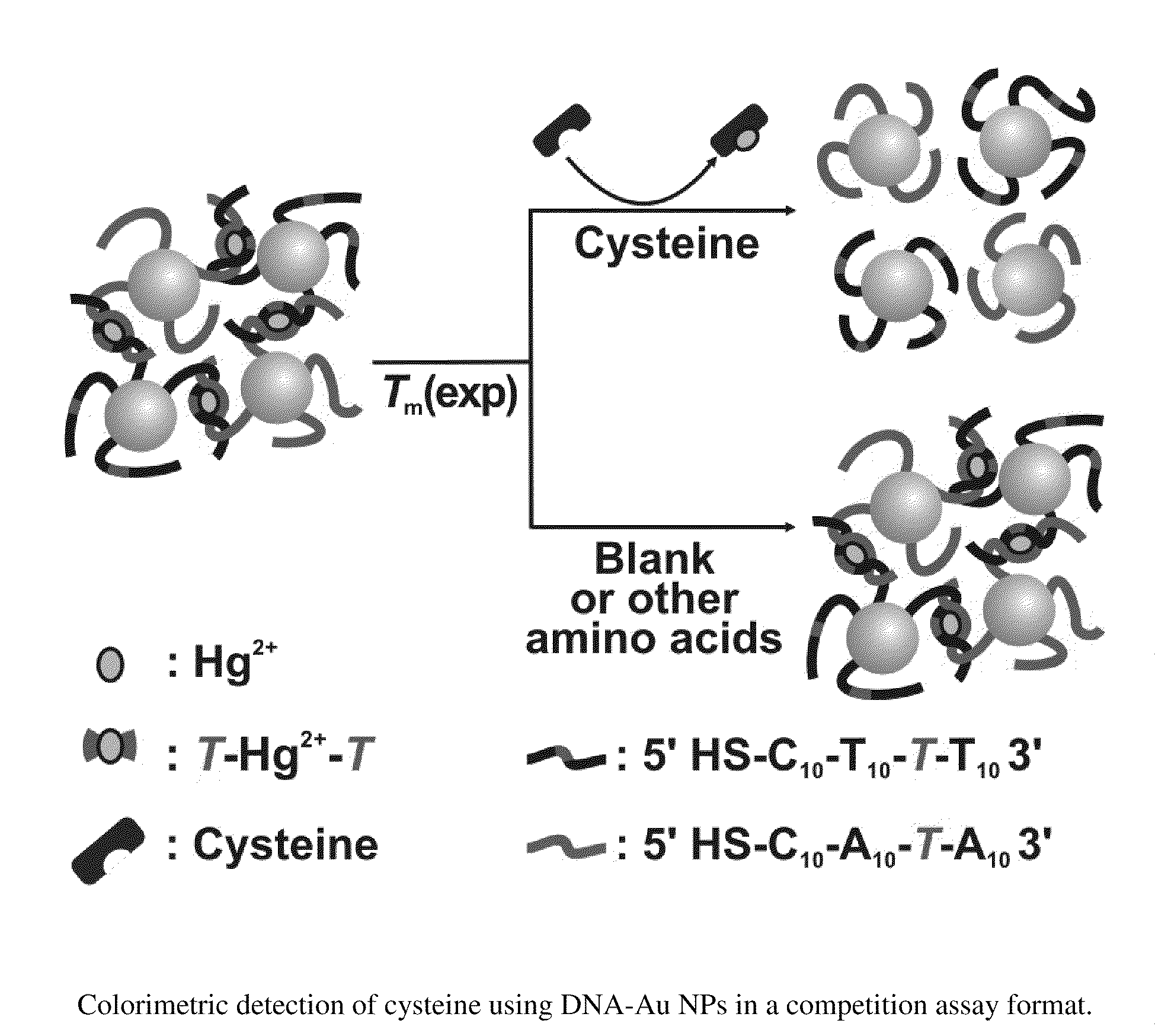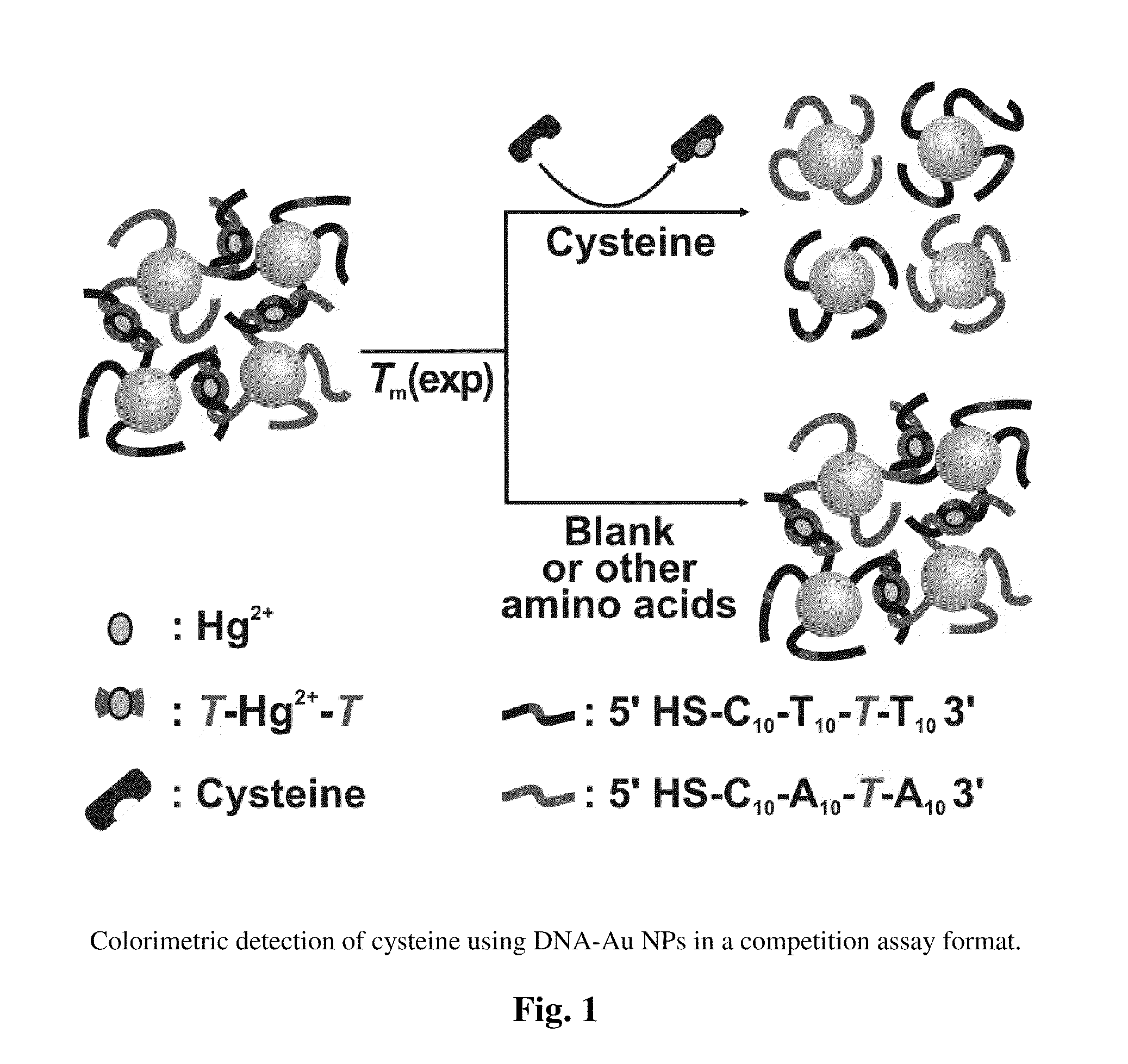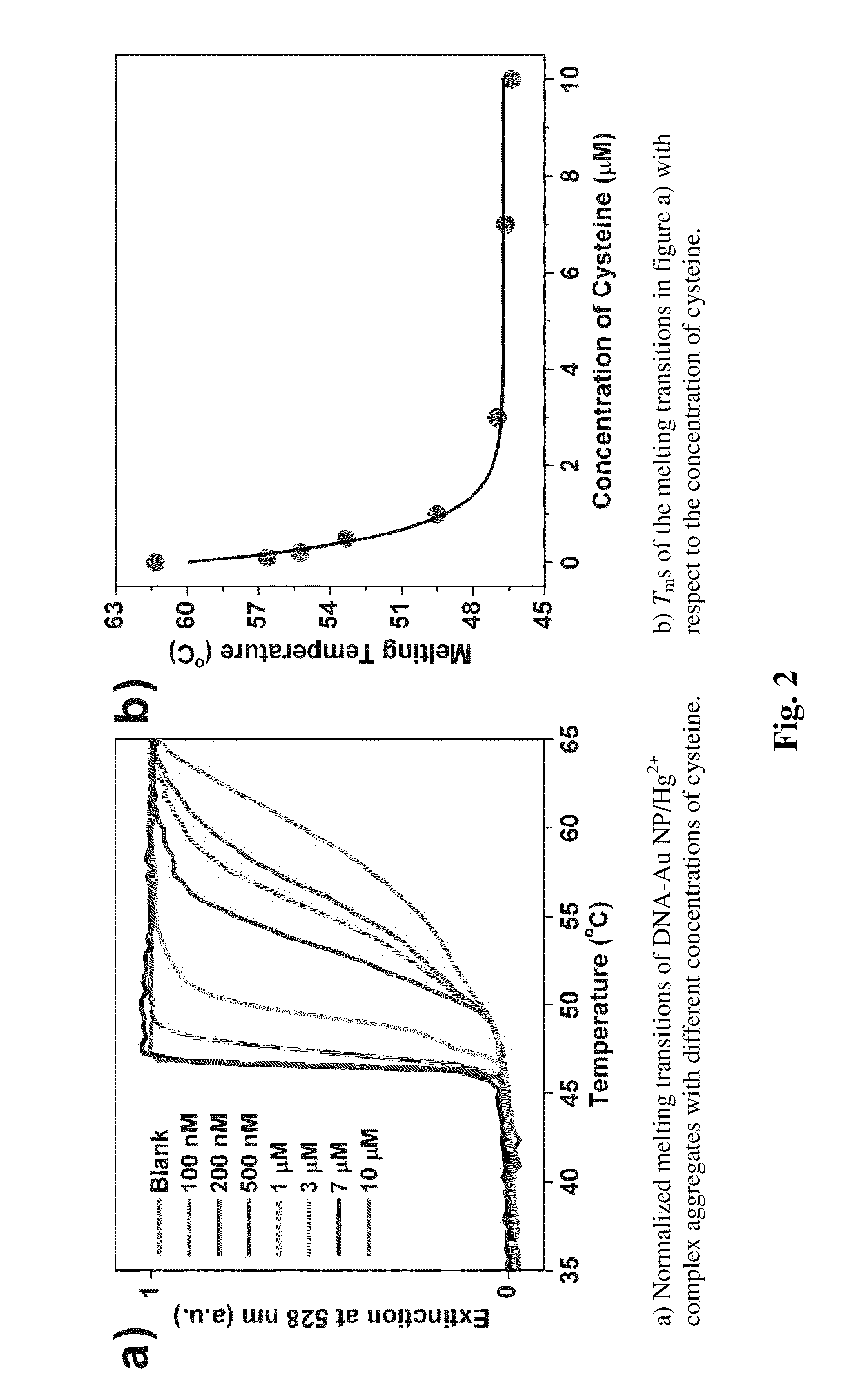[0007]The invention also provides a method to detect the presence of cysteine in a sample. The method includes providing a first mixture comprising complexes comprising an agent that binds cysteine and associates with nucleotide mismatches, e.g., Hg2+, and a population of gold nanoparticles. The population has gold nanoparticles with one of a pair of single stranded oligonucleotides and gold nanoparticles with the other single stranded oligonucleotide of the pair. The pair is selected so as to form a double stranded duplex having at least one internal nucleotide mismatch. The first mixture is contacted with a sample suspected of having cysteine to form a second mixture and then the optical properties of the second mixture are detected at one or more temperatures, e.g., a temperature selected to denature the double stranded duplex relative to a corresponding second mixture with a sample that lacks cysteine.
[0008]The invention further provides a method of detecting cysteine in sample. The method includes contacting a sample, a first nanoparticle and a second nanoparticle to form a mixture. In one embodiment, the concentration of each of the nanoparticles in the mixture is about 0.1 nM to about 10 nM. The first nanoparticle surface is functionalized on at least a portion of the surface with a first oligonucleotide and the second nanoparticle surface is functionalized on at least a portion of the surface with a second oligonucleotide. The sequence of the first oligonucleotide and the sequence of the second oligonucleotide have sufficiently complementarity to form a duplex. The mixture is subjected to conditions that provide for duplex formation and then an optical property of the mixture, for instance, at about 518 nm to about 550 nm, is detected at a temperature sufficient to denature the duplex. When the sample comprises cysteine, the optical property of the mixture is different than the optical property of the mixture in the absence of cysteine. In one embodiment, the optical property of the mixture is correlated to a melting temperature of the duplex. In one embodiment, the duplex comprises at least one mismatch, e.g., a T-T mismatch, which is at an internal nucleotide position of at least one of the oligonucleotides or at the 3′ most nucleotide position of one of the oligonucloetides. In one embodiment, at least one of the oligonucleotides has 50 nucleotides or less nucleotides. In one embodiment, at least one of oligonucleotides has at least 7 nucleotides 5′, 3′, or both 5′ and 3′ to the mismatch. In one embodiment, the contacting is carried out in the presence of mercuric ion. In one embodiment, at least one of nanoparticle types has a diameter of about 5 nm to about 200 nm, e.g., about 5 nm to about 40 nm. In one embodiment, at least one of the nanoparticle types comprises a gold nanoparticle. In one embodiment, the sample is a physiological sample from a mammal, e.g., a human, such as a plasma sample. In one embodiment, the sample is a mammalian tissue sample, such as a brain, liver, heart, or muscle tissue sample. In one embodiment, for a physiological sample of a mammal, the concentration of cysteine is correlated to the risk of one or more disorders, such as neuronal degeneration, muscle wasting or immune dysfunction.
[0009]Further provided is a method of detecting the presence or amount of cysteine a sample. The method includes contacting a sample, a first nanoparticle and a second nanoparticle to form a mixture. The first nanoparticle surface is functionalized on at least a portion of the surface with a first oligonucleotide and the second nanoparticle surface is functionalized on at least a portion of the surface with a second oligonucleotide. The sequence of the first nanoparticle and the sequence of the second nanoparticle have sufficiently complementary to form a duplex. After the mixture is subjected to conditions that provide for duplex formation, a melting temperature of the duplex in the mixture is detected. The melting temperature is indicative of the presence or amount of cysteine in the sample, when compared to a standard measurement. In one embodiment, the duplex comprises at least one mismatch, e.g., a T-T mismatch, which is at an internal nucleotide position of at least one of the oligonucleotides or at the 3′ most nucleotide position of one of the oligonucelotides. In one embodiment, at least one of the oligonucleotides has 50 nucleotides or less. In one embodiment, at least one of oligonucleotides has at least 7 nucleotides 5′, 3′ or both 5′ and 3′ to the mismatch. In one embodiment, the contacting is carried out in the presence of mercuric ion. In one embodiment, at least one of nanoparticle types has a diameter of about 5 nm to about 200 nm, e.g., about 5 nm to about 40 nm. In one embodiment, at least one of the nanoparticle types comprises a gold nanoparticle. In one embodiment, the sample is a physiological sample from a mammal, e.g., a human, such as a plasma sample. In one embodiment, the sample is a mammalian tissue sample, such as a brain, liver, heart, or muscle tissue sample. In one embodiment, for a physiological sample of a mammal, the concentration of cysteine is correlated to the risk of one or more disorders, such as neuronal degeneration, muscle wasting, and immune dysfunction.
 Login to View More
Login to View More 


